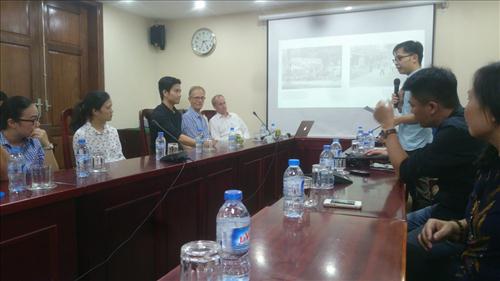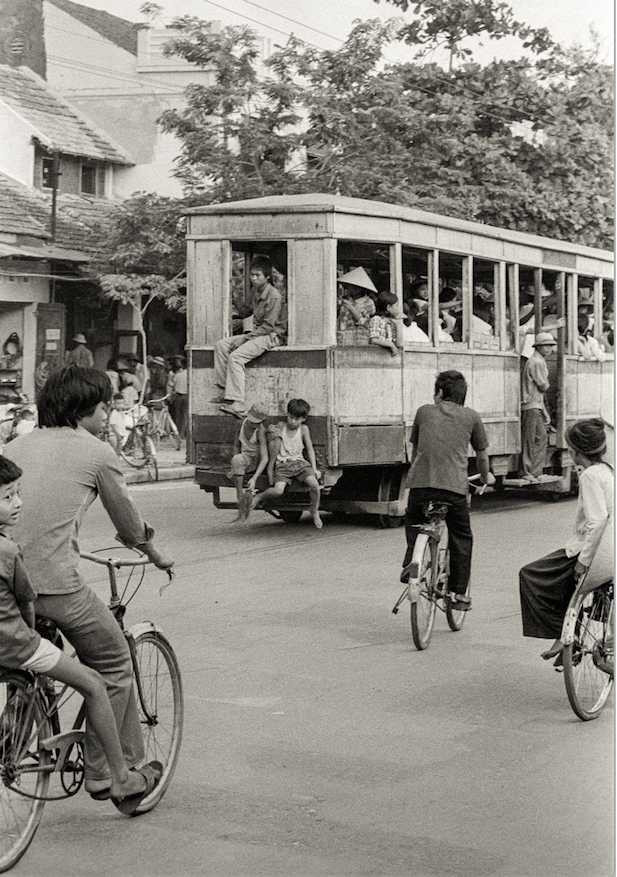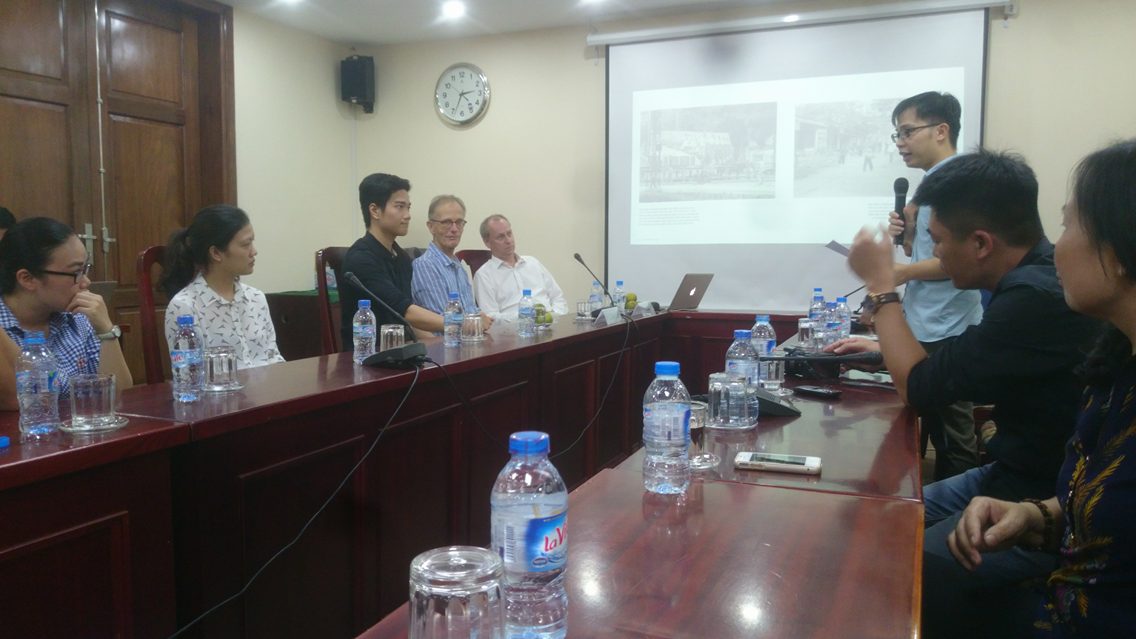
At the seminar, scientists, teachers and students were able to view two unique photo collections, with two different perspectives of Hanoi, through the introduction of the authors of the two photo collections, and the commentary of Professor Andrew Hardy, chief representative of the French School of the Far East (EFEO) in Vietnam.

(A photo from the photo series "Hanoi Once Upon a Time" by John Ramsden)
The first is the photo series “Hanoi Once Upon a Time” by Sir John Ramsden. He is a veteran British diplomat who worked in Hanoi from 1980 to 1982 as Deputy Chief of Mission at the British Embassy. During his stay in Vietnam, he took thousands of photos of Hanoi, during the years when the atmosphere of the subsidy period still covered the lives of the people. The photos taken by John were exhibited in the UK and Denmark under the name Hanoi: Spirit of Place. In 2013, the photo series was awarded the Bui Xuan Phai Award – For the Love of Hanoi. The photo series will also be introduced to readers in the photo book “Hanoi Once Upon a Time” on October 11, 2016.


The second photo collection, “Beloved Hanoi,” is the work of Nguyen Huu Bao, a photographer from Hanoi. He used to be a photojournalist for the weekly Van Nghe and the magazine Xua – Nay. In his photography career, he traveled all over Vietnam, and the results of those trips were many famous photo exhibitions such as “Village Memories” and “Street Memories.” However, above all, the place he devoted the most love and effort to was still Hanoi, and the result of that love was the book “Beloved Hanoi,” a photo collection about the lives of people and landscapes of Hanoi in modern times.
Although approaching Hanoi through two different lenses, in two different periods, both photo collections exude one thing in common. That is the timeless beauty of Hanoi, from the charm of the difficult days of the subsidy period, to the freshness of the atmosphere of the open period. More importantly, both photo collections clearly demonstrate the most typical qualities of anthropological research. First, anthropology does not study people and society by analyzing numbers or abstract theories, but by immersing itself in life, to record people's daily activities up close, with all its authenticity and liveliness. Second, instead of trying to give a single perspective on a problem, anthropology always respects, and always tries to describe as fully as possible, the diversity in the way people live, think and feel the world around them.


Author:Lam Minh Chau
Newer news
Older news